'New Brunswick safari': A guided tour of lower Wolastoq wetlands
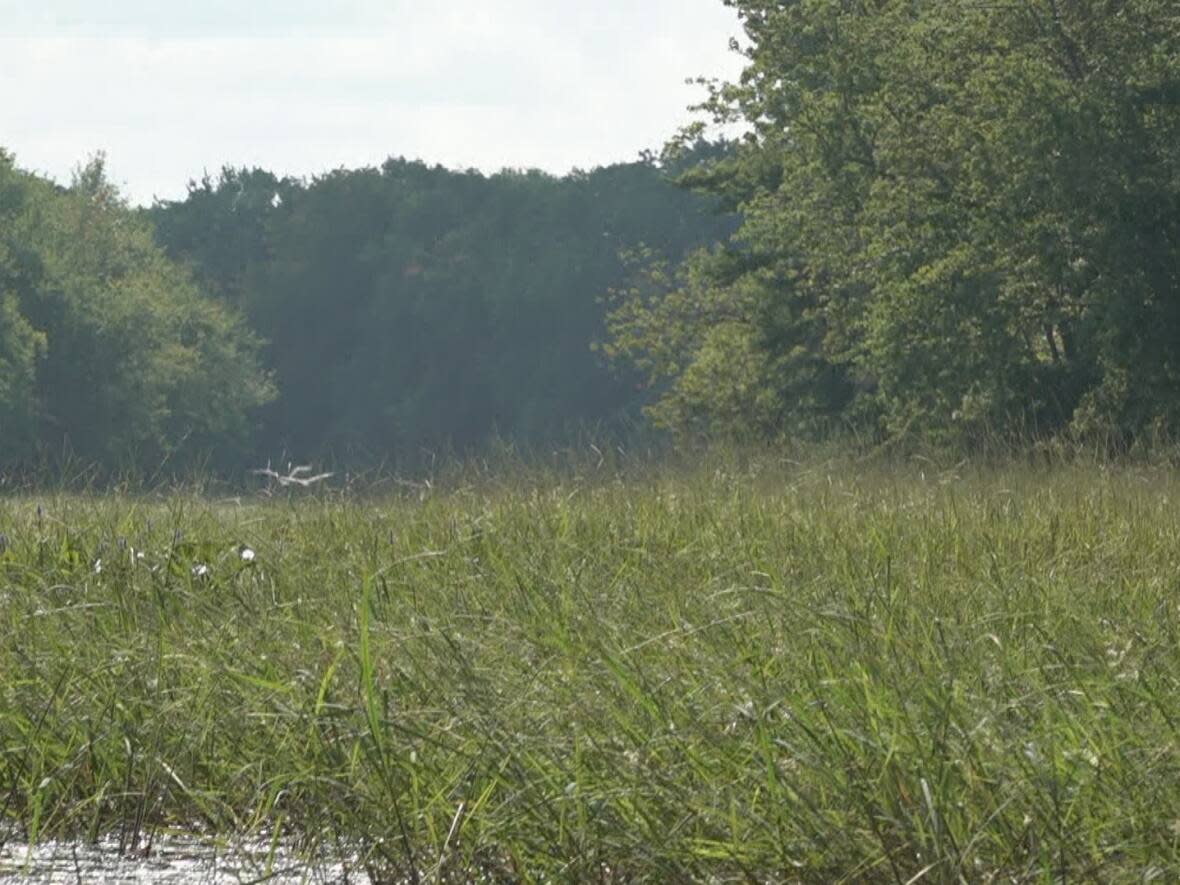
Ducks Unlimited Canada recently hosted a media tour of a few of its projects in the Gagetown area. The organization is promoting efforts to restore and expand some marshes between the Mactaquac Dam and Saint John, an area it says forms one of the most extensive freshwater wetland systems in Eastern Canada. Here's what CBC News saw on the tour and learned about the condition of the habitat and its role in mitigating flooding and climate change.
It was a warm, sunny Aug. 25 morning when we departed from the public slip at Gagetown in a flat-bottomed, aluminum boat.
Our guides were three Ducks Unlimited employees: outreach specialist Samantha Brewster and conservation specialist Frank Merrill, both based in Fredericton, and Adam Campbell of the Sackville area, the group's manager of Atlantic operations.
McAllister's Marsh on Gagetown Island, just across the St. John River, or Wolastoq, was our first destination — a project built in 1990 and repaired in 2018 after its berms sustained major damage from spring flooding and ice.
At the mouth of Mount Creek, a flock of red-winged blackbirds perched in the tall grass along the shoreline.
WATCH | 'It's like going on a New Brunswick safari'
They were getting ready to migrate, said Campbell, and probably picking bugs off the wild rice plants.
They flitted along for a moment, then took off.
"You get a big congregation of those birds flying over you, you'd swear it was like a jet engine or something," said Campbell.
Wild rice dominated the mixture of plants along the riverbank. It was a few weeks away from being ready to pick.
It's a "very good" long-grain brown rice, said Brewster, that has to be parched, winnowed and cooked until the grain splits and curls.
"It smiles at you when it's ready to eat," she said, passing on knowledge she learned from Cecelia Brooks, the Wolastoqi traditional plant expert.
Bacteria were the next life form to show up on our tour.

A sheen could be seen on the water that the guides described as a biofilm caused by bacteria breathing as they go about their valuable decomposing work.
Suddenly, two eagles took off from the treetops and two great blue herons lifted off into a low glide above the marsh grass.
"That's what's so lovely about this area," said Campbell. "It's like going on a New Brunswick safari."
We landed on a mud bank and started walking toward the marsh site, when the ground began to move under our feet.
Campbell managed to catch one of the critters causing the illusion. He identified it as a leopard frog.
Shortly, we arrived at an open expanse where berms surround about 170 acres of water and grass and a caged-in concrete structure keeps the water at a depth of about two feet.
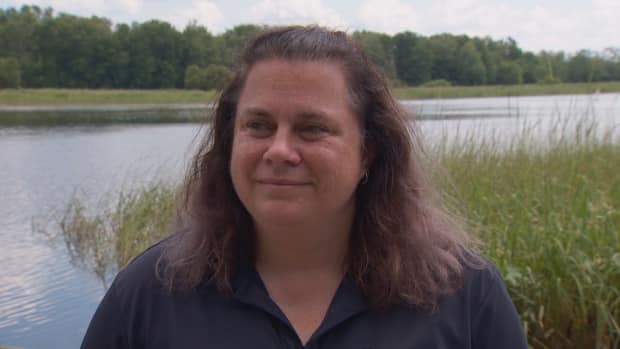
"That suits everything that wants to live here," said Campbell, "whether it's a muskrat or a least bittern or a duck."
As we went in for a closer look, we flushed out an American bittern — not quite as elusive as the least but still "a good sighting."
They are both small herons with brown feathers and can use their beaks to imitate swaying grass, said Campbell.
Bitterns are species of concern — mainly because of wetland loss.
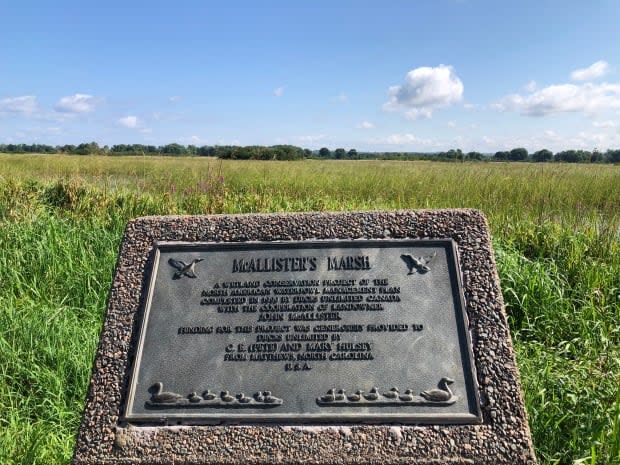
Ducks Unlimited is trying to compensate for the loss of wetland because of agricultural and other types of development, said Campbell, by constructing and maintaining other wetlands.
"This was a way to put some back on the landscape," he said.
McAllister's Marsh is a highly productive wetland, said Campbell.
"It's almost like it's fertilized on an annual basis," with nutrients and sediment from the spring freshet, he said.
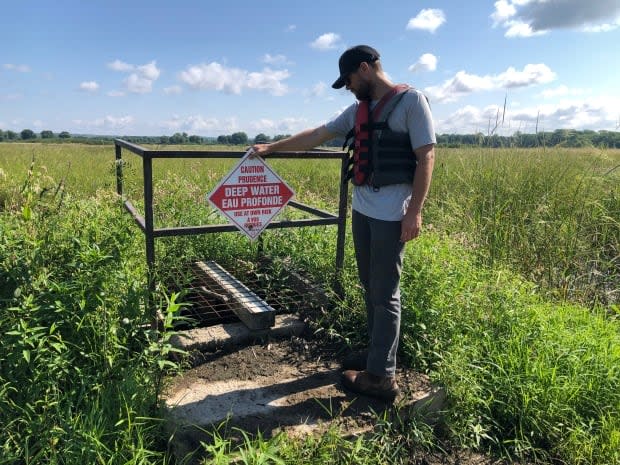
Birds in the area also include black terns, wood ducks, blue-winged teals, green-winged teals, mallards and black ducks.
"If you talk to all the really aggressive bird watchers that are out there looking for certain species, they're typically coming to the wetlands that we manage," said Campbell, "because they're thriving."
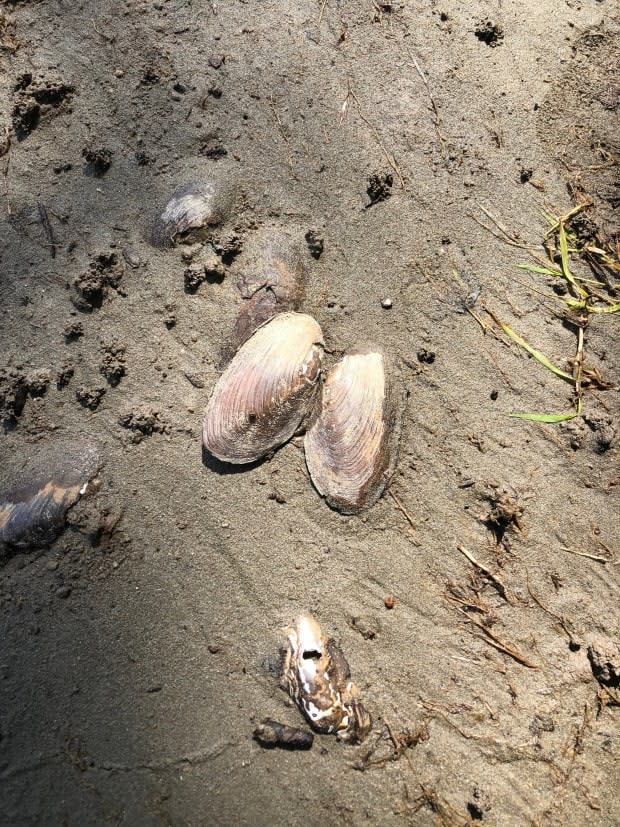
As we headed next toward Nevers Island, just east of Gagetown Island in the mouth of the Jemseg River, we passed fish jumping and saw more eagles, ducks, herons and osprey.
The guides were happy so much wildlife was showing up for this moment in the spotlight.
"What we're trying to do is raise the awareness of the people who live here, how special this area is," said Campbell.
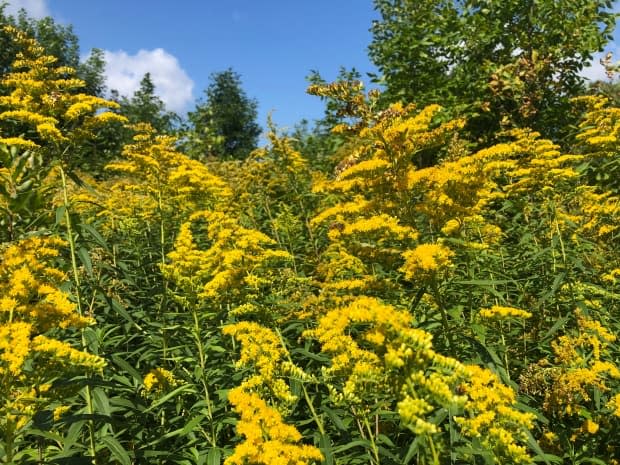
Floodplain wetlands such as this are considered provincially significant, and receive the highest level of protection under provincial policies.
"So we're in a good place where we're not going to be losing anymore," he said.
But just last year, a wetland nature preserve right in Fredericton was mistakenly drained for a roadwork project.
That happened because of miscommunication between departments, said Bethany Young of the Nature Trust of New Brunswick.
There's still room for improvement on that front, she said, but some on-the-ground staff got training afterward and she hopes it won't happen again.
Floodplain wetland policies in New Brunswick are strong, agreed Young, but she noted that the overall amount of land being protected is still much lower than the national target.
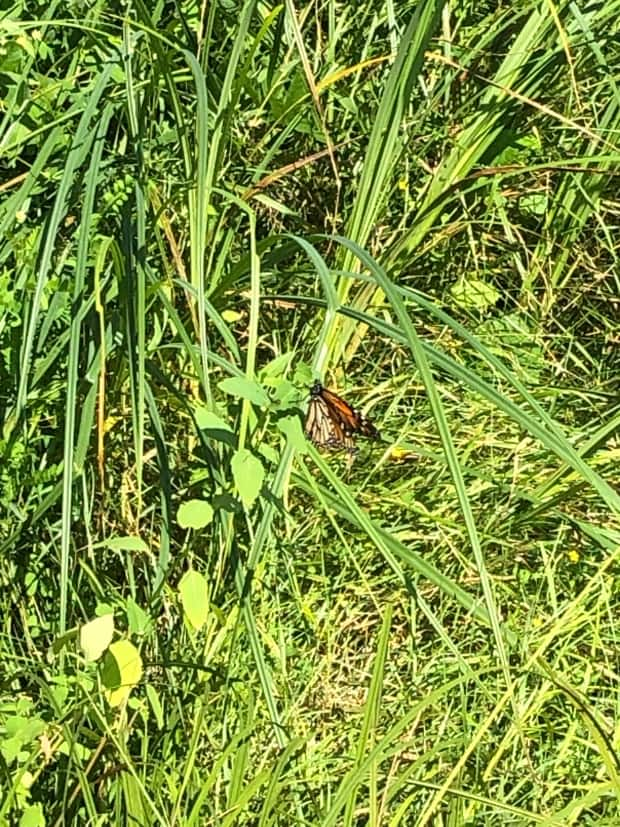
On Nevers Island, we began a short walk to the marsh. Brewster had no sooner observed milkweed, goldenrod and Joe Pye weed that would be the "perfect" habitat for pollinators, when a monarch butterfly was spotted on a plant very slowly opening and closing its wings.
There were a few others around, too, and a very late-season monarch caterpillar.
It still had two weeks ahead of it in the chrysalis before it could attempt to migrate, she said, and wouldn't be able to move if the temperature fell below 15 C.
"Monarchs are amazing," said Brewster.
"At this time of year they go from a reproductive phase, that only lives as an adult for a couple of weeks, to their migratory phase, which can live for up to six months."
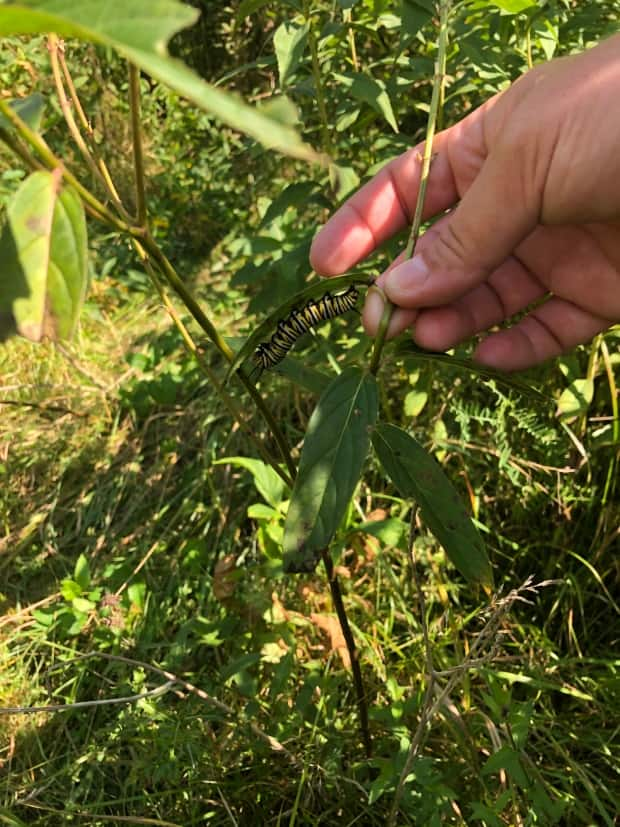
The butterflies leaving now for Mexico are about five generations descended from those that last made the trip from Mexico to Canada, she said.
"The whole fact that they know where to go and how to get back is ridiculous."
Habitat loss, pesticides and climate change are blamed for putting the species at risk of extinction.
At the top of a berm, we could see a few ducks in a shallow pool at one end of the containment.
Most of the marsh had dried out, explained Merrill, because a 30-year-old culvert had failed. It is slated to be repaired in the coming weeks.
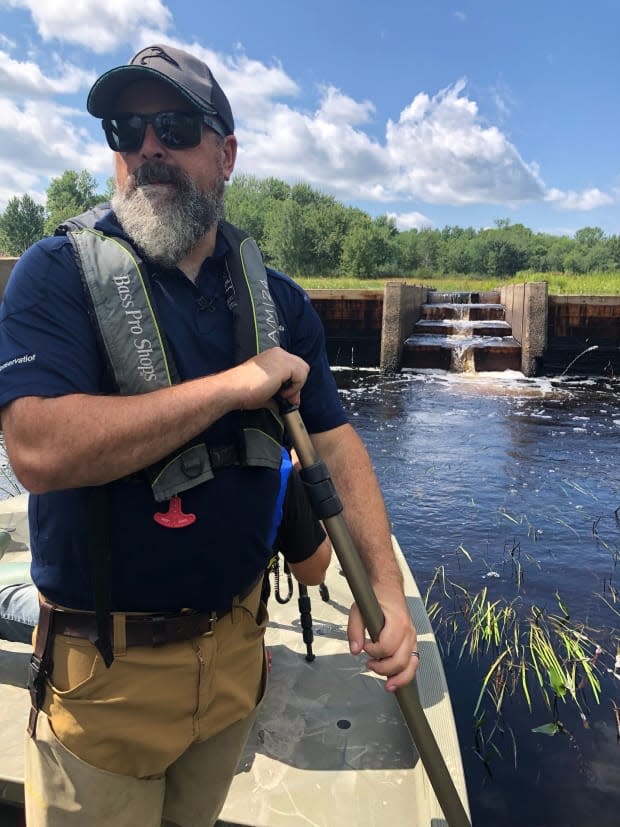
The area would be good habitat for cavity-nesting wood ducks, he noted, due to the dead trees along its edge.
The Wolastoq wetlands are a "hotspot" for wood ducks, hooded mergansers and common goldeneyes, according to researcher Joe Nocera of the University of New Brunswick.
A nest box program in the area has improved breeding rates dramatically, he said.
Our final stop was Boyd's Marsh, in the Lower Gagetown area, where a dam holds water a couple of metres above river level, and a fish ladder provides a route to spawning or feeding grounds for species including bullhead catfish, pickerel, small mouth bass and eels.
The water control structure boosts the wetland's natural ability to capture water and slow its release, said Campbell, which helps reduce the impact of flooding from heavy rains.
As the climate changes, wetlands are also increasingly important for holding water during drier periods, storing carbon — as silt and leaves settle into them — and as habitat, said Campbell and Brewster
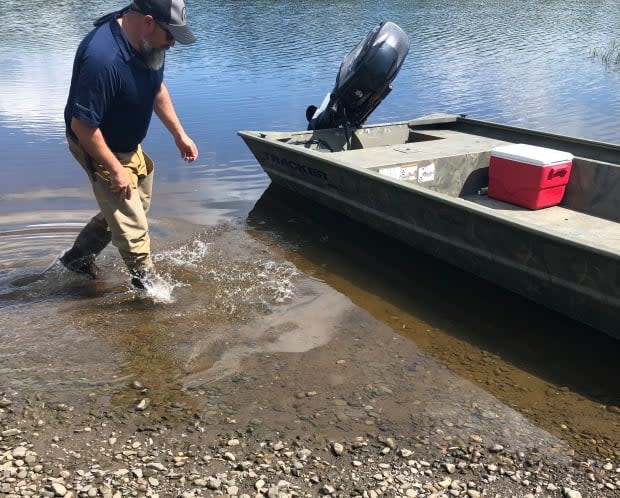
"Biodiversity-wise, they are one of the most productive ecosystems on the planet," said Brewster. "Number two only to rainforests."
"Who likes to drink clean water? Everyone. Who needs water? Everyone. And that's people, plants, animals — everything."
Ducks Unlimited says it has 64 wetland projects in the lower Wolastoq and a number of them need repairs.
Merrill said the plan is to plod ahead restoring and maintaining as many as possible.
The Government of New Brunswick announced $350,000 in funding in July, which will cover some of the work.
The North Carolina government has also pitched in because the state is on the same migration path.


